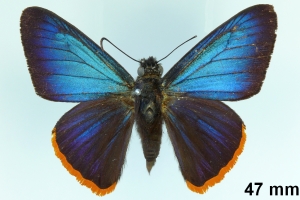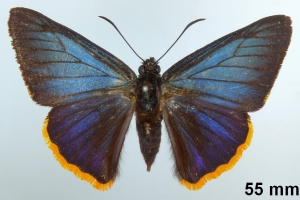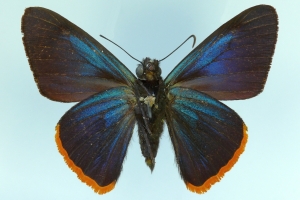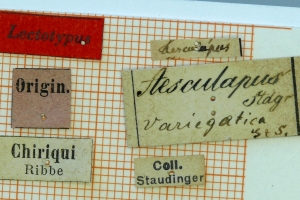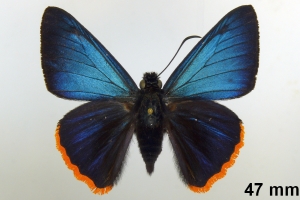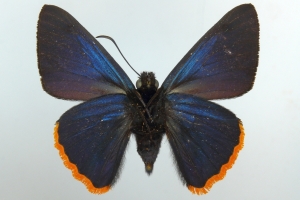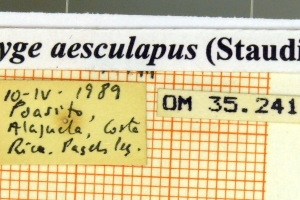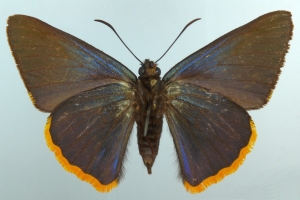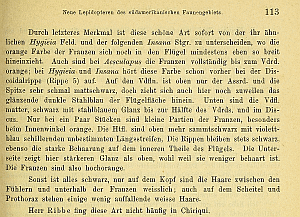Version 3 (neueste) vom 1. Juni 2024 um 17:21:51 von Jürgen Rodeland
Länder:

 +5Kontinente:MASA
+5Kontinente:MASA


 +5Kontinente:MASA
+5Kontinente:MASAInhalt
2. Diagnose
2.1. Männchen
1-3: ♂, Daten siehe Etiketten (fot.: Ernst Brockmann, Fotos bearbeitet: Michel Kettner), coll. Zoologisches Museum der Humboldt-Universität zu Berlin.
4-6: ♂, Daten siehe Etiketten (fot.: Ernst Brockmann, Fotos bearbeitet: Michel Kettner), coll. Departamento de Zoologia, Universidade Federal do Paraná, Curitiba, Paraná, Brazil.
2.2. Weibchen
1-3: ♀, Daten siehe Etiketten (fot.: Ernst Brockmann, Fotos bearbeitet: Michel Kettner), coll. Departamento de Zoologia, Universidade Federal do Paraná, Curitiba, Paraná, Brazil.
2.3. Erstbeschreibung
3. Weitere Informationen
3.1. Andere Kombinationen
- Pyrrhopyge aesculapus Staudinger, 1876 [Originalkombination]
- Jonaspyge aesculapus (Staudinger, 1876)
- Apyrrothrix aesculapus (Staudinger, 1876)
3.2. Synonyme
- Pyrrhopyga [sic] variegaticeps Godman & Salvin, 1879
3.3. Faunistik
Nach Mielke, Brockmann & Mielke (2022) kommt die Art in El Salvador, Costa Rica, Panama, Kolumbien und Ecuador vor.
Locus typicus gemäß Erstbeschreibung: Chiriqui [Panama].
(Autor: Michel Kettner)
3.4. Literatur
- Brockmann E., Mielke, C. G. C. & O. H. H. Mielke (2022): Hesperiidae III: New World Pyrrhopyginae, short text and plates. — In: E. Bauer & T. Frankenbach (ed.) (2022): Butterflies of the World 50: 40 p. + 76 pl. Keltern.
- Mielke, O. H. H., Brockmann, E. & C. G. C. Mielke (2022): Hesperiidae II: New World Pyrrhopyginae, detailed text. — In: E. Bauer & T. Frankenbach (ed.) (2022): Butterflies of the World 49: 120 pp. Keltern.
- Orellana A. (2008): Pyrrhopyginae de Venezuela (Lepidoptera: Hesperioidea: Hesperiidae). — Entomotropica 23 (3): 177-291. [PDF auf saber.ucv.ve]
- Erstbeschreibung: Staudinger, O. (1876): Neue Lepidopteren des südamerikanischen Faunengebietes. — Verhandlungen der kaiserlich-königlichen zoologisch-botanischen Gesellschaft in Wien 25: 89-124.
3.5. Informationen auf anderen Websites (externe Links)
- [BOLD], dort unter Jonaspyge aesculapus zu finden.
- [Butterflies of America], dort unter Apyrrothrix aesculapus zu finden.






